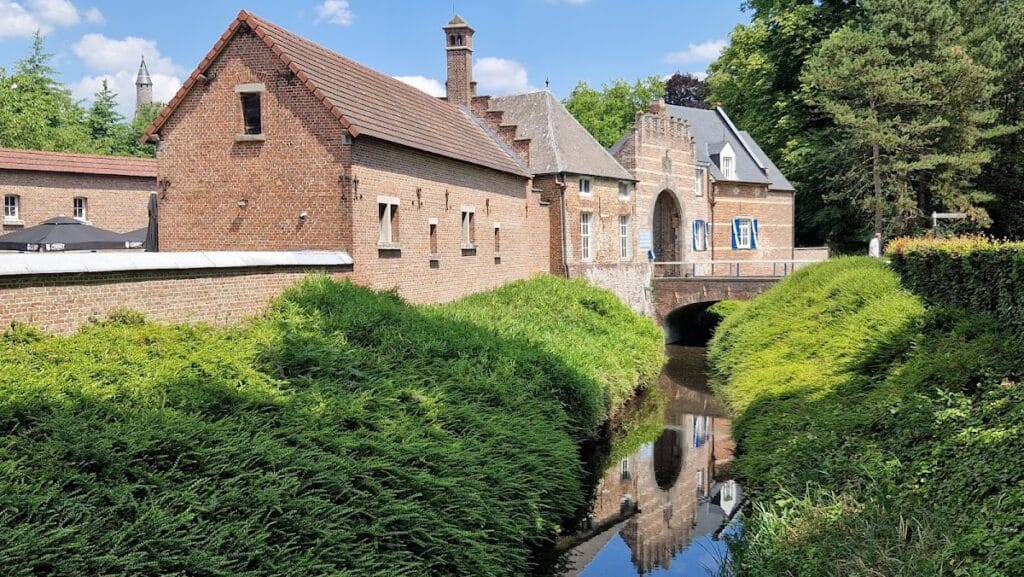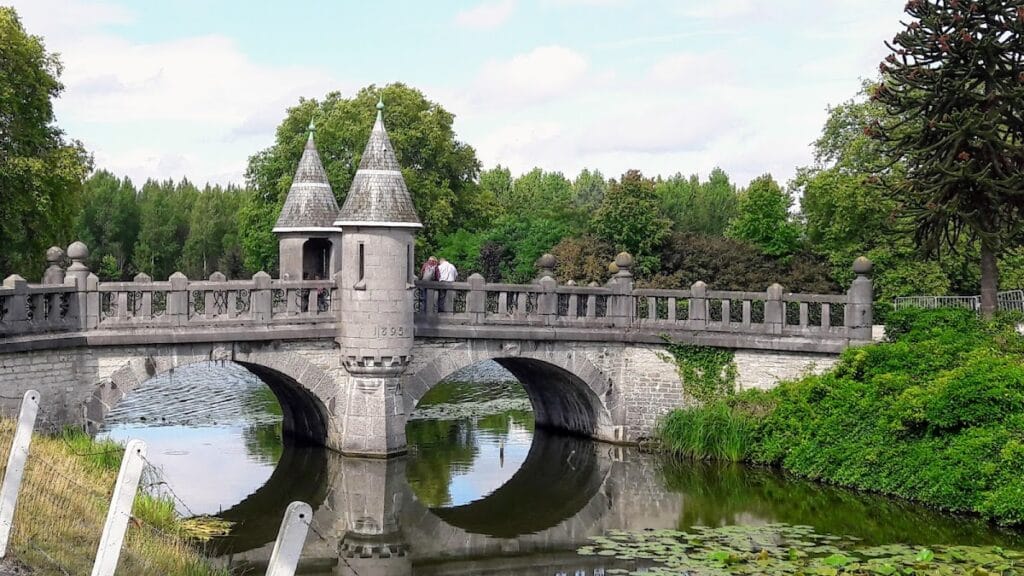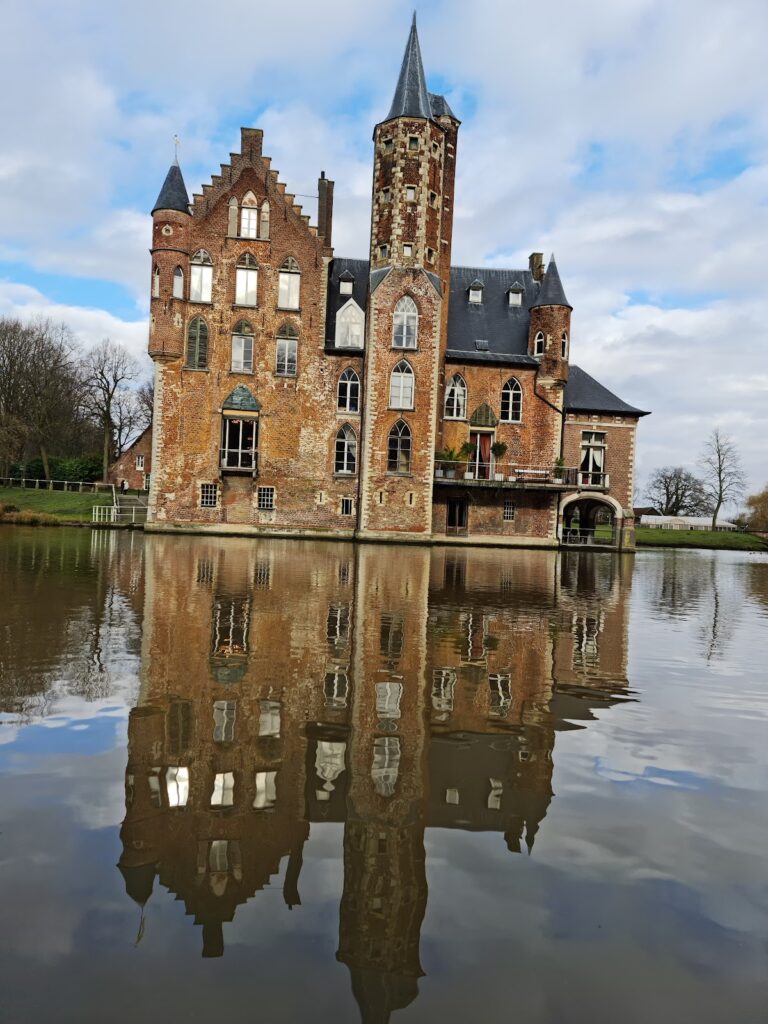Kasteel de Marnix de Sainte Aldegonde: A Historic Castle in Bornem, Belgium
Visitor Information
Google Rating: 4.2
Popularity: Low
Google Maps: View on Google Maps
Official Website: www.kasteelvanbornem.be
Country: Belgium
Civilization: Medieval European
Remains: Military
History
Kasteel de Marnix de Sainte Aldegonde is located in the municipality of Bornem, Belgium. The site originally hosted a fortress constructed by local medieval inhabitants during the 10th or 11th century. Positioned on the banks of the Oude Schelde, a branch of the Scheldt River, this early stronghold aimed to protect the area from incursions by Vikings navigating upriver.
In the 13th century, a significant transformation took place when the castle’s site was separated from the mainland through the creation of an artificial island surrounded by a moat. Although the original fortress diminished in strategic importance after Viking raids had ceased, the moat contributed to renewed defensive considerations in this period.
By the late 16th century, during the ongoing conflicts between Spanish forces and the rebellious Geuzen, the lands around the castle suffered extensive devastation. In 1587, Pedro Coloma, a Spanish nobleman, acquired the property. He undertook major rebuilding works on the castle and encouraged resettlement of the surrounding area. Coloma also founded a nearby monastery in Bornem, which became a refuge for English Dominicans exiled in 1658 and later evolved into the Saint Bernard Abbey in the 19th century.
The Coloma family gained prominence when King Philip IV of Spain elevated them to the rank of counts of Bornem in 1658. However, the estate changed hands in 1773 when the Marnix de Sainte Aldegonde family took ownership. A distinguished family member, Philip van Marnix de Sainte Aldegonde, served as mayor of Antwerp beginning in 1583 but did not reside at the castle.
Throughout the 17th century, wars inflicted heavy damage upon the castle, prompting the demolition of the central keep in 1687. The upheavals of the French Revolution forced the 8th Count of Bornem to flee to the Netherlands, leading to the castle’s seizure and public sale in 1799. Nonetheless, the count repurchased the property in 1802, returned to live there, and served as mayor until 1832.
In the late 19th century, a comprehensive reconstruction was initiated by Count Ferdinand de Marnix de Sainte Aldegonde. Starting in 1880, numerous older parts of the castle were dismantled to make way for a new neo-Gothic palace. The initial architectural design was by Hendrik Beyaert, later completed by E. Janlet. Additional features, such as watchtowers along the bridge access, were built in 1895. The estate remains in the possession of the De Marnix family, with some adopting the surname “de Sainte-Aldegonde” since 1881. The current owner received recognition in 2013 from the Royal Association of Historic Residences and Gardens of Belgium for efforts to preserve the site.
Remains
The castle stands on a nearly square artificial island that was formed in the 13th century, surrounded by water and historically separated from the mainland by a moat. Originally, access to the island was granted by a drawbridge on its western side; today, a fixed stone bridge connects the grounds to the land, its approach flanked by watchtowers added in 1895. The medieval ring walls once enclosing the castle were removed during the 19th-century rebuilding, replaced by a complex of three wings arranged around a courtyard, with the main wing facing west. The current buildings reflect the neo-Gothic style, characterized by decorative domes and turrets that enhance the palace’s silhouette.
Among the estate’s notable hydraulic structures is a sluice gate commissioned in 1592 by Pedro Coloma on the Oude Schelde. This sluice gate, designed to regulate water flow, holds the distinction of being the second oldest such installation in Belgium and the oldest in the Flanders region. Near the river lies a historic duck decoy, dating back to 1314 and improved by Coloma in 1612. This device, which captures ducks for consumption, now serves a role in scientific research.
Inside the castle are several collections reflecting its long history. Paintings include portraits of influential historical figures such as Margaret of Austria, and Holy Roman Emperors Charles V and Philip II of Spain. The castle also houses 91 engravings by Pieter Brueghel the Elder, including his work titled “The Great Fish Eat the Little Ones.” The interiors contain antique furnishings from the 17th and 18th centuries, with special rooms dedicated to lace and collections of antique dolls. An outbuilding on the property functions as a carriage museum, preserving historical vehicles.
The defensive layout of the site featured a double moat system, effectively a double ring wall, which provided enhanced protection during earlier periods. The stone bridge leading to the castle, with its watchtowers constructed in the late 19th century, adds to the fortified appearance of the compound as it stands today.










